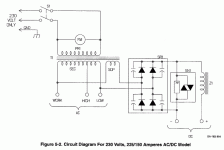patrick_g
Elite Member
Sound Guy, Unfortunately the "standard" approach is often not standard. The gap between tech writers and technicians and engineers often interferes with things or language differences can cause translation problems.
Often times when "PEAK" power is listed it does not actually indicate the actual power in Watts when the product of the instantaneous voltage and current values are at the maximum. It is a statement of the highest RMS Wattage reached in conditions such as all burners on high, during starting surge of a motor, inrush current to a heating element or in some instances inrush to charge a capacitor. Rated this way you get an idea of how large a fuse has to be to not blow or a breaker to not trip under this "peak" load. It does NOT necessarily relate to the instantaneous power peak during a half cycle when the product of amps and volts is at its maximum value.
Big time philosophical difference or point of view between the electrician and the electronic tech or engineer.
Warning ANNECDOTE FOLLOWS!!!
In my spare time I was helping a friend who was placed in charge of electronically outfitting several diesel powered aluminum fishing boats for use in Alaska that were being made at the Campbell shipyard in San Diego. He was loaned manpower from the ranks of the electricians. They were having problems. Lots of electronics on these boats: RADAR, SONAR, VHF, SSB SATNAV and on and on. Short circuits, popped breakers, vaporized fuses in pigtails to radios, and on and on.
My friend was so busy putting out little fires he didn't GET the big picture which was that the electricians were using the black wires for "HOT" and the electronic technicians were using the black wires for ground (like the manufacturers intended.) Between them they were wiring the 12 volt busses directly to ground through breakers and fuses. Everyone followed THEIR standard but the electricians were not used to DC color codes.
My point is that sometimes we need to take a step back and pull our noses out of contact with the bark of a tree to better observe the forest.
Pat
Often times when "PEAK" power is listed it does not actually indicate the actual power in Watts when the product of the instantaneous voltage and current values are at the maximum. It is a statement of the highest RMS Wattage reached in conditions such as all burners on high, during starting surge of a motor, inrush current to a heating element or in some instances inrush to charge a capacitor. Rated this way you get an idea of how large a fuse has to be to not blow or a breaker to not trip under this "peak" load. It does NOT necessarily relate to the instantaneous power peak during a half cycle when the product of amps and volts is at its maximum value.
Big time philosophical difference or point of view between the electrician and the electronic tech or engineer.
Warning ANNECDOTE FOLLOWS!!!
In my spare time I was helping a friend who was placed in charge of electronically outfitting several diesel powered aluminum fishing boats for use in Alaska that were being made at the Campbell shipyard in San Diego. He was loaned manpower from the ranks of the electricians. They were having problems. Lots of electronics on these boats: RADAR, SONAR, VHF, SSB SATNAV and on and on. Short circuits, popped breakers, vaporized fuses in pigtails to radios, and on and on.
My friend was so busy putting out little fires he didn't GET the big picture which was that the electricians were using the black wires for "HOT" and the electronic technicians were using the black wires for ground (like the manufacturers intended.) Between them they were wiring the 12 volt busses directly to ground through breakers and fuses. Everyone followed THEIR standard but the electricians were not used to DC color codes.
My point is that sometimes we need to take a step back and pull our noses out of contact with the bark of a tree to better observe the forest.
Pat

